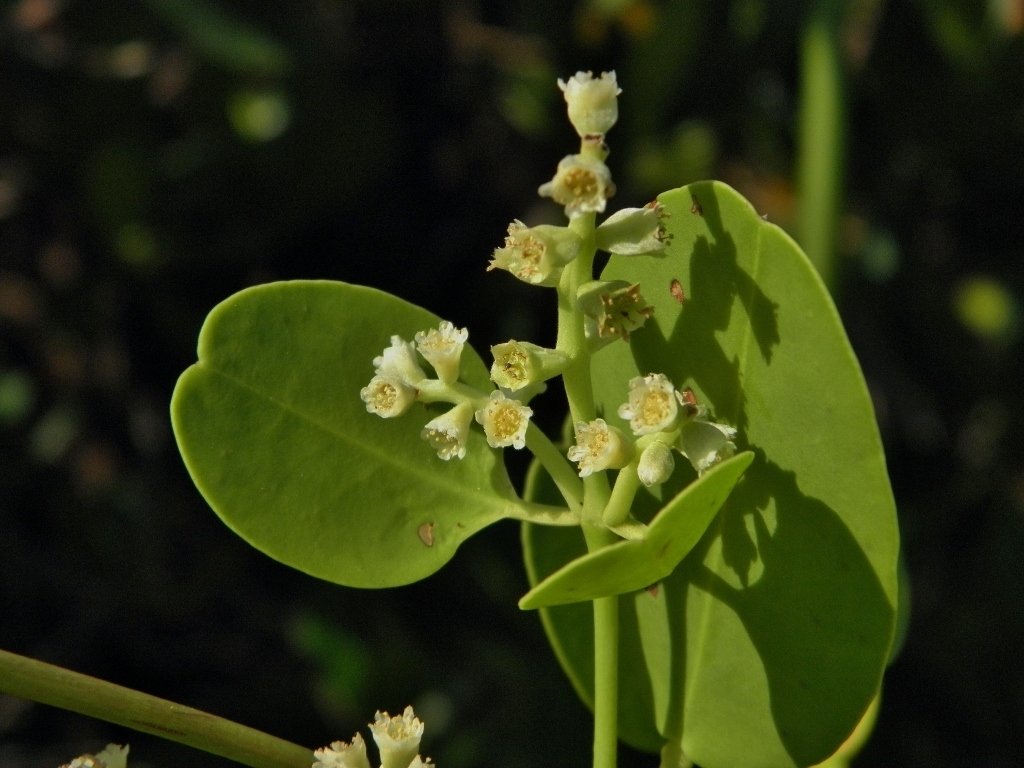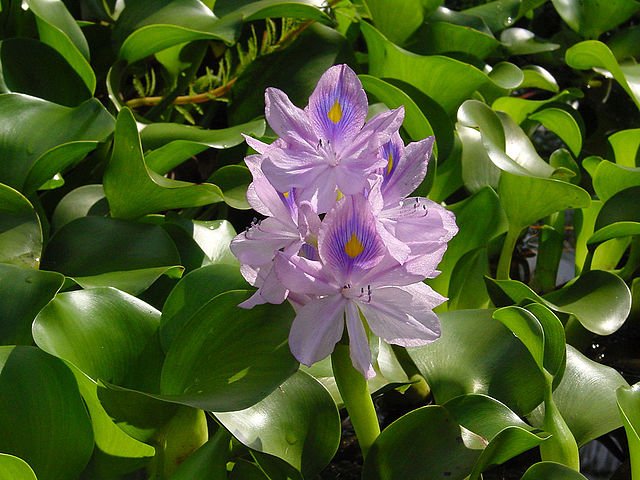
Products

Diversity of peninsular honeys
Mexico is a megadiverse country, this quality provides a large number of blooms and therefore also a great diversity of honey. A large part of the diversity of plant and animal species found in the country is concentrated in the Yucatan peninsula, therefore, the diversity of honey produced is also greater than in other parts of the country. Yucatan is considered the second state with the highest production. At DELIMAB we believe that the characterization and differentiation of honeys is an added value, since it is a great pleasure to know the different characteristics, origins and flavors, therefore within our products you will find 8 different types of honey.
Climbing plant
Description: Climbing plants in trees: Coralillo or Chilillo (Rivina humilis), San Diego, Santiago flower, San Miguelito-antigonon leptopus.
Harvest time: January-March
Characteristics
– Colour: 20-50 mm pfund (White-Extra light amber)
– Pollen: Variable
– Moisture: 19-20%
– PH: 3.6-4
– Taste: Flower and herbal
– Smell: Sweet and Floral scent




Tajonal
Description: Tajonal (Viguiera dentata var. helianthoides), is an annual herbaceous that can grow up to 2.5 meters in height, characteristic of the secondary vegetation of agricultural burning areas (Agricultural Burning). It is a native and endemic plant of the Yucatan Peninsula, considered as a marker of the geographical origin of honey from the Peninsula. It has a great contribution of nectar and pollen, which makes it very attractive to bees and marks the beginning of the beekeeping cycle on the peninsula.
Harvest time: January-March
Characteristics
– Colour: 25-60 mm pfund (White-Light amber)
– Pollen: > 45%
– Moisture: 18-19.5%
-PH: 3.6-4.2
– Taste: Flowerl, Sweet-Acid
– Smell: Flower-Herbal
Dzidzilche
Description: The Dzidzilché (Gymnopodium floribundum Rolfe) is a native species of plant in the península of Yucatan, it is considered an emblematic species of the region, which is why it is the most recognized honey on the peninsula. Shrub or small tree, with a thin trunk that reaches three meters or more. In the Mayan language, dzidzilché or t’sit’silche’ means “tree that peels”, since its particular bark seems to be peeling off. This singular characteristic allows it to shelter epiphytic plants, thus fulfilling an important ecological function.
Harvest time: March – June
Characteristics
– Colour: 50-87 mm pfund (Extra light amber-Amber)
– Pollen: < 40%
– Moisture: 18-19.5%
– Conductivity (ms/cm): 0.5-0.55
-PH: 3.7-4
– Taste: Flower and candy
– Smell: Flower and candy




JMUK
Description: Tree (Dalbergia glabra), present in the high jungle, also used for its timber resource
Harvest time: March – May
Characteristics
– Colour: 86-120 mm pfund (Amber – Dark amber)
– Mooisture: 18.5 – 20.5%
-PH: 3.6-4.2
– Taste: Herbal and Wood, Sweet and Acid
– Smell: Herbal and Wood
Huano
Description: Guano Palm or Bonxaan (Sabla mexicana martius), palm native to tropical regions of Mesoamerica, mature individuals reach up to 20 m in height, simple fan-shaped leaves, fragrant white flowers grouped. The leaves are used for the construction of traditional Mayan houses, as well as the manufacture of hats, baskets, fans, brooms and other crafts.
Harvest time: November – January / May-June
Characteristics
– Colour: 50 -60 mm pfund (Light amber – amber)
– Moisture: 19.5 – 20.5%
-PH: 3.7-4.2
– Taste: Herbal- Fruity and candy
– Smell: Herbal and fruit




Mangrove
Mangroves are made up of trees that grow in the salty water of the tidal zones, or in the salty soils, frequently inundated by salty water. Mangroves are very rich ecosystems because the few species they harbor cannot grow anywhere else in the world. They are ecologically important, offering accommodation to a large number of species of birds, fish and reptiles. They are also socially valuable, since in mangrove areas there are important fishing communities. Also because the mangroves protect the coasts from hurricanes. Four mangrove species predominate: Rhizophora mangrove (red mangrove), Laguncularia racemosa (white mangrove), Avicennia germinans (black mangrove, madresal) and Conocarpus erectus (buttonwood mangrove).
Harvest time: April – May
Characteristics
– Colour: 16 – 40 mm pfund (Extra White – White)
– Pollen: < 15 %
– Moisture: 19.5 – 22%
– Conductivity (ms/cm): 0.39 – 0.61
-PH: 3.8 – 4.3
– Taste: Sweet and salty
– Smell: Fruit
Lily
Water lily (Pontederia crassipes C. Martius) in combination with vines and scrub (shrubs). This flowering occurs in the same way in coastal or estuary areas, as well as in cenotes.
Harvest time: May-June
Characteristics
– Colour: 20-40mm pfund (White-Amber extra light)
– Pollen: Variable
– Moisture: 18.5-19.5%
-PH: 3.6-4
– Taste: Flower and Herbal
– Aroma: Sweet and Floral




Polyfrora Honey
Description: This honey is made up of a variety of high jungle blooms such as: Jabín (Piscidia piscipula (L.) Sarg), Jmuk (Dalbergia labra), Chakaj (Burseba simaruba), Sak katsim (Mimosa bahamensis), Tsalam (Lisiloma latisiliquum ), Piich (Enterolobium cyclocarpum).
Harvest time: May-July
Characteristics
– Colour: 50-90 mm pfund (Light amber-Amber)
– Moisture: 19.5-20.5%
– Conductivity (ms/cm): 0.5-0.55
– PH: 3.7-4
– Taste: Flower and Candy
– Smell: Flower and Candy
Melipona honey
Description: There are hundreds of species of Stingless bees native to Mexico and Mesoamerica, of which a particular group are stingless bees, which make up what in biology is called the Meliponini tribe. In this tribe are Melipona, Scaptotrigona and Tetragonisca, the main genera of native bees managed, Melipona beecheii being the best known. Many species belong. Some 10 species have been cultivated since pre-Hispanic times by different peoples of Mesoamerica, constituting a highly relevant biological and cultural heritage. Melipona is known for its management by the Mayans of Petén and the Yucatán Peninsula. The Mayans used their honey as food, to prepare drinks such as balché that was consumed during ceremonies and used as an offering to the gods. These bees are very important culturally but also and of course ecologically, as they are pollinators of many native plant species. In fact, they are specialized in visiting and pollinating trees and shrubs, with very little being observed foraging in herbs. Its harvest is a very careful ancestral and artcraft process, the bee colony produces 1-1.2 kilograms of honey over the course of a year.
Harvest time: Variable (January – June)
Characteristics
– Colour: 32 – 90 mm pfund (Extra light amber – Amber)
– Pollen: variable
– Moisture: 20 -23%
-PH: 3.6 -3.8
– Taste: Flower – Fruit
– Smell: Flower – fruit


We introduce you


Miel Sofía Jar 1.2 oz
Jar 1.2 oz
- All types of honey
- Net weight: 35 g / 1.23 Oz
- Glass jar

Miel Sofía Jar 6.4 Oz
6.4 Oz
- Types of honey: Dzidzilche, Lirio, Jmuk, Mangrove, Huano, Climbing plant, and Tajonal
- Net weight: 180 g / 6.4 Oz
- Glass jar

Miel Sofía Jar 14 Oz
14 Oz
- Types of honey: Polyflora, Dzidzilche, Lily, Jmuk, Huano, Tajonal, climbing plant and Mangrove
- Net weight: 400 g / 14 Oz
- Glass jar

Miel Sofía Jar 23 Oz
23 Oz
- Types of honey: Polyflora, Dzidzilche, Lily, Jmuk, Huano, Tajonal, climbing plant and Mangrove
- Net weight: 650 g / 23 Oz
- Glass jar

Miel Sofía Bottle 24 Oz Squezee
24 Oz
- Types of honey: Multiflora, Dzidzilche, Climbing plant, Tajonal, Huano and Mangrove
Net weight: 680 g / 24 Oz
- Glass jar

Miel Sofía Jar 42 Oz
42 Oz
- Types of honey: Multiflora, Dzidzilche, Climbing plant, Tajonal, Huano and Mangrove
- Net weight: 1.2 kg / 42 Oz.
- Glass jar

Miel Sofía Bucket 211 Oz
211 Oz
- All types of Honey
- Net weight: 6 kg / 211 Oz
- Food grade plastic bucket

Miel Sofía Bucket 917 Oz
917 Oz
- All types of honey
- Net weight: 26 kg / 917 Oz
- Food grade plastic bucket
We introduce you


Miel Regadio Jar 30 ml
30ml
- Melipona beechei honey
- Net content: 30 ml
- Glass jar

Miel Regadio Dropper bottle 30 ml
30ml
- Melipona beechei honey
- Net content: 30 ml
- Amber glass bottle, with a dropper dispenser

Miel Regadio Bottle 125 ml
125ml
- Melipona beechei honey
- Net content: 125 ml
- Amber glass bottle

Miel Regadio Bottle 250 ml
250ml
- Melipona beechei honey
- Net content: 250 ml
- Amber glass bottle

Miel Regadio Bottle 500 ml
500ml
- Melipona beechei honey
- Net content: 500 ml
- Amber glass bottle

Miel Regadio Bottle 1000 ml
1000 ml
- Melipona beechei honey
- Net content: 1000 ml
- Amber glass bottle

Miel Regadio Bucket 4 L
4l
- Melipona beechei honey
- Net content: 4000 ml
- Food grade plastic bucket

Miel Regadio Bucket 19 L
19l
- Melipona beechei honey
- Net content: 19Lt
- Food grade plastic bucket
Quote form
Follow us
@DelimabSAdeCV
